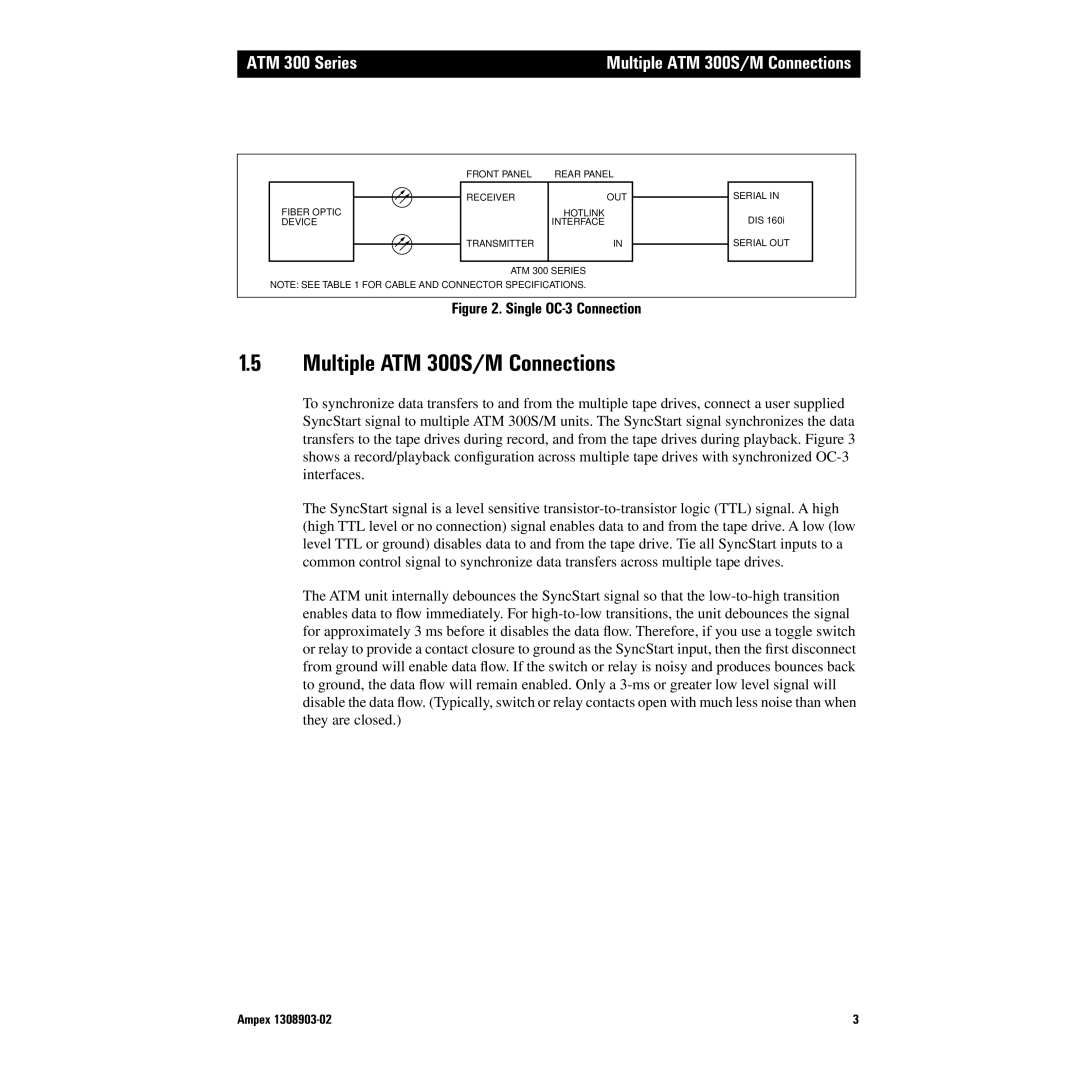
ATM 300 Series | Multiple ATM 300S/M Connections |
| |
FRONT PANEL | REAR PANEL | |
RECEIVER | OUT | SERIAL IN |
FIBER OPTIC | HOTLINK | DIS 160i |
DEVICE | INTERFACE |
TRANSMITTER | IN | SERIAL OUT |
ATM 300 SERIES | |
NOTE: SEE TABLE 1 FOR CABLE AND CONNECTOR SPECIFICATIONS. | |
Figure 2. Single OC-3 Connection
1.5Multiple ATM 300S/M Connections
To synchronize data transfers to and from the multiple tape drives, connect a user supplied SyncStart signal to multiple ATM 300S/M units. The SyncStart signal synchronizes the data transfers to the tape drives during record, and from the tape drives during playback. Figure 3 shows a record/playback configuration across multiple tape drives with synchronized OC-3 interfaces.
The SyncStart signal is a level sensitive transistor-to-transistor logic (TTL) signal. A high (high TTL level or no connection) signal enables data to and from the tape drive. A low (low level TTL or ground) disables data to and from the tape drive. Tie all SyncStart inputs to a common control signal to synchronize data transfers across multiple tape drives.
The ATM unit internally debounces the SyncStart signal so that the low-to-high transition enables data to flow immediately. For high-to-low transitions, the unit debounces the signal for approximately 3 ms before it disables the data flow. Therefore, if you use a toggle switch or relay to provide a contact closure to ground as the SyncStart input, then the first disconnect from ground will enable data flow. If the switch or relay is noisy and produces bounces back to ground, the data flow will remain enabled. Only a 3-ms or greater low level signal will disable the data flow. (Typically, switch or relay contacts open with much less noise than when they are closed.)

